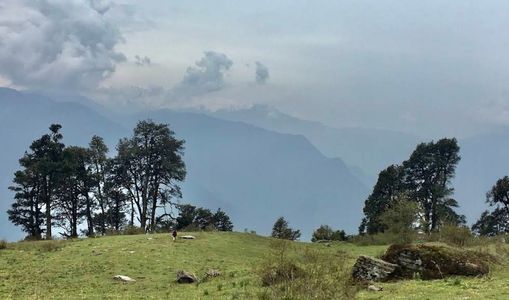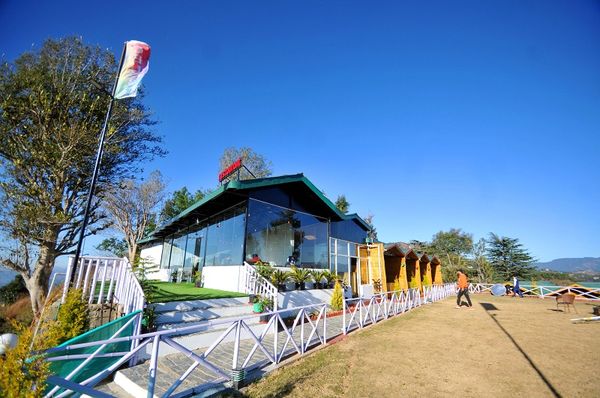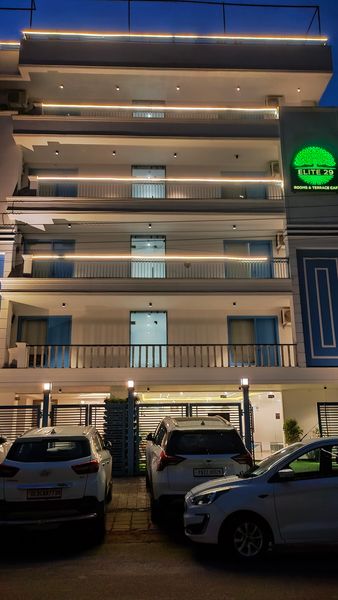Things They Don’t Tell You About Dayara Bugyal in the Monsoon
 Ankit Rawat
21 Jul, 2025
10 mins read
79
Ankit Rawat
21 Jul, 2025
10 mins read
79

Dayara Bugyal is one of the most beautiful alpine meadows in India. Located in the Uttarkashi district of Uttarakhand, it sits at an altitude of about 11,800 feet. Trekkers love visiting Dayara Bugyal during different seasons, but the monsoon brings a mix of beauty and challenge that many do not expect. If you are planning a trip during the rainy season, here are some important things you need to know that most people will not tell you.
The Trail Becomes Very Slippery
One of the first things to understand is that the trail becomes extremely slippery during the monsoon. Rainfall makes the mud wet and loose. Grass-covered paths turn into tricky routes. Trekkers often face difficulty walking uphill or downhill. Even with good trekking shoes, it can be hard to find grip. You must be extra careful with every step.
What You Can Do
- Wear trekking shoes that have strong grip
- Use trekking poles for support
- Take small and steady steps
- Avoid rushing while walking
Leeches and Insects Are Common
Most people do not tell you about the leeches and bugs you might face during this season. The wet ground and moisture attract small creatures. Leeches are often found in forest sections. They can stick to your shoes or socks and are hard to notice at first.
How to Stay Safe
- Wear full-length clothing
- Apply salt or carry anti-leech spray
- Avoid resting on wet grass or forest floors
- Check your clothes and shoes after a break
Clouds Can Block All Views
People visit Dayara Bugyal for the breathtaking views of the Himalayas. During monsoon, the clouds and fog can hide all the scenery. Sometimes, you may walk for hours and see nothing but mist around you. This can be disappointing if you are expecting clear mountain views.
What to Keep in Mind
- Understand that views are not guaranteed
- Enjoy the peaceful atmosphere instead
- Be patient as the clouds may clear for a short time
- Keep your camera ready just in case
Landslides and Road Closures
Reaching the base village of Barsu or Raithal can become difficult during heavy rains. Roads in the Uttarkashi region are prone to landslides. Travel delays are common. Vehicles may get stuck for hours or need to take longer routes.
Travel Tips
- Start your journey early in the day
- Keep buffer days in your plan
- Listen to local advice about road conditions
- Book drivers who are familiar with the area
Mobile Network Is Weak or Missing
You might already expect poor mobile signals in the mountains. But during monsoon, the weather can make it worse. Most of the trek has no mobile network at all. Even in base villages, the signal may come and go. This means you will be cut off from phone and internet for most of the trip.
How to Prepare
- Inform your family before the trek
- Download offline maps
- Carry a power bank
- Write down emergency contacts on paper
Wet Clothes Are a Constant Problem
Rain often catches trekkers by surprise. Even with rain jackets or ponchos, clothes and bags may get wet. Once wet, it is hard to dry them in the cold and humid environment. Wet socks and shoes can cause blisters and discomfort.
Pack These Essentials
- Quick-dry clothing
- Extra pair of socks and innerwear
- Waterproof bag cover
- Plastic bags to store wet clothes
Camp Sites May Be Muddy and Cold
If you are doing the Dayara Bugyal trek as a multi-day trip, you will camp in tents. During monsoon, the campsites may be wet, muddy and uncomfortable. Nights can be cold, and the damp air makes it worse.
What Helps
- Good quality sleeping bag
- Waterproof tent with groundsheet
- Warm layers for the night
- Avoid walking into the tent with wet socks or shoes
Beautiful Wildflowers Bloom
Now that we have talked about the challenges, here is a reason why some trekkers still choose the monsoon season. The meadows of Dayara Bugyal come alive with wildflowers in various colors. The greenery is at its peak. Everything looks fresh and magical.
What to Enjoy
- Colorful flowers on both sides of the trail
- Fresh smell of wet grass and earth
- Peaceful silence with fewer crowds
- Photos that look like nature paintings
Fewer Tourists Means More Peace
Since many people avoid trekking in the rain, you will find very few fellow trekkers. This means the trail is quieter and less crowded. You can enjoy nature without disturbance. You may even find moments of complete silence.
Use This Time to
- Connect with nature
- Practice mindfulness or meditation
- Capture photos without people in the frame
- Listen to birds and flowing streams
Guides and Porters Are Very Helpful
During monsoon, having a local guide or porter is very helpful. They know the safe paths. They can alert you about dangerous spots or sudden changes in weather. They can also help you carry bags, which is useful when walking on slippery paths.
Why You Should Hire One
- Better safety and support
- Less load on your back
- Useful local knowledge
- Help in case of emergency
Final Thoughts Before You Go
Dayara Bugyal is stunning during the monsoon, but it is also tricky. If you are ready for rain, mud, and less comfort, you will get to enjoy a quiet and green version of the trek. Just make sure you are well prepared and stay flexible with your plans. Nature has its own mood in the monsoon, and every moment can surprise you.
Quick Checklist for Monsoon Trek
- Rain jacket and waterproof pants
- Extra clothes and socks
- Strong grip shoes
- First aid kit
- Power bank and torch
- Snacks and water bottle
- Plastic covers for electronics
- Trekking pole for support
Conclusion
Dayara Bugyal trek in the monsoon is not for everyone. It comes with rain, clouds, and several challenges that many blogs and travel pages do not mention. But for those who come prepared, it offers a unique and peaceful trekking experience. Just remember to stay safe, listen to locals, and respect the mountain. Sometimes, the journey is more about what you feel than what you see.
Written By:
Ankit Rawat



Hotels at your convenience
Now choose your stay according to your preference. From finding a place for your dream destination or a mere weekend getaway to business accommodations or brief stay, we have got you covered. Explore hotels as per your mood.


